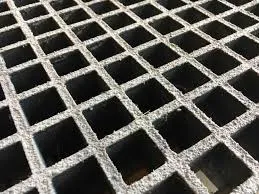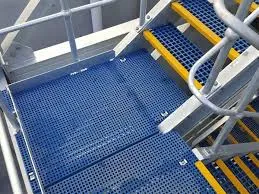
-
 Afrikaans
Afrikaans -
 Albanian
Albanian -
 Amharic
Amharic -
 Arabic
Arabic -
 Armenian
Armenian -
 Azerbaijani
Azerbaijani -
 Basque
Basque -
 Belarusian
Belarusian -
 Bengali
Bengali -
 Bosnian
Bosnian -
 Bulgarian
Bulgarian -
 Catalan
Catalan -
 Cebuano
Cebuano -
 China
China -
 China (Taiwan)
China (Taiwan) -
 Corsican
Corsican -
 Croatian
Croatian -
 Czech
Czech -
 Danish
Danish -
 Dutch
Dutch -
 English
English -
 Esperanto
Esperanto -
 Estonian
Estonian -
 Finnish
Finnish -
 French
French -
 Frisian
Frisian -
 Galician
Galician -
 Georgian
Georgian -
 German
German -
 Greek
Greek -
 Gujarati
Gujarati -
 Haitian Creole
Haitian Creole -
 hausa
hausa -
 hawaiian
hawaiian -
 Hebrew
Hebrew -
 Hindi
Hindi -
 Miao
Miao -
 Hungarian
Hungarian -
 Icelandic
Icelandic -
 igbo
igbo -
 Indonesian
Indonesian -
 irish
irish -
 Italian
Italian -
 Japanese
Japanese -
 Javanese
Javanese -
 Kannada
Kannada -
 kazakh
kazakh -
 Khmer
Khmer -
 Rwandese
Rwandese -
 Korean
Korean -
 Kurdish
Kurdish -
 Kyrgyz
Kyrgyz -
 Lao
Lao -
 Latin
Latin -
 Latvian
Latvian -
 Lithuanian
Lithuanian -
 Luxembourgish
Luxembourgish -
 Macedonian
Macedonian -
 Malgashi
Malgashi -
 Malay
Malay -
 Malayalam
Malayalam -
 Maltese
Maltese -
 Maori
Maori -
 Marathi
Marathi -
 Mongolian
Mongolian -
 Myanmar
Myanmar -
 Nepali
Nepali -
 Norwegian
Norwegian -
 Norwegian
Norwegian -
 Occitan
Occitan -
 Pashto
Pashto -
 Persian
Persian -
 Polish
Polish -
 Portuguese
Portuguese -
 Punjabi
Punjabi -
 Romanian
Romanian -
 Russian
Russian -
 Samoan
Samoan -
 Scottish Gaelic
Scottish Gaelic -
 Serbian
Serbian -
 Sesotho
Sesotho -
 Shona
Shona -
 Sindhi
Sindhi -
 Sinhala
Sinhala -
 Slovak
Slovak -
 Slovenian
Slovenian -
 Somali
Somali -
 Spanish
Spanish -
 Sundanese
Sundanese -
 Swahili
Swahili -
 Swedish
Swedish -
 Tagalog
Tagalog -
 Tajik
Tajik -
 Tamil
Tamil -
 Tatar
Tatar -
 Telugu
Telugu -
 Thai
Thai -
 Turkish
Turkish -
 Turkmen
Turkmen -
 Ukrainian
Ukrainian -
 Urdu
Urdu -
 Uighur
Uighur -
 Uzbek
Uzbek -
 Vietnamese
Vietnamese -
 Welsh
Welsh -
 Bantu
Bantu -
 Yiddish
Yiddish -
 Yoruba
Yoruba -
 Zulu
Zulu
Jan . 31, 2025 05:56
Back to list
Covers
Understanding the advantages of fiberglass ducts can significantly improve the efficacy and quality of your HVAC system, driving both energy efficiency and cost-effectiveness. As an industry expert with years of practical experience in environmental systems engineering, let’s delve into why fiberglass ducting stands head and shoulders above traditional metal ductwork in various scenarios.
Fiberglass ducts also receive high marks for fire resistance; they do not support combustion and resist high temperatures, adding a layer of safety and security to buildings. Not only does this characteristic enhance safety in the event of a fire, but it also contributes to meeting stringent building codes and standards, demonstrating how fiberglass ductwork can contribute to a building’s overall compliance and credibility. In view of environmental concerns, fiberglass ductwork systems are becoming more attractive due to their sustainability features. By contributing to energy conservation through superior insulation, they indirectly reduce the carbon footprint associated with building operation. More firms are acknowledging this benefit and are choosing fiberglass as part of a broader commitment to sustainable practices, thereby supporting environmental stewardship. For businesses and homeowners querying about the adaptability of fiberglass ducts, they are versatile and can integrate seamlessly into existing HVAC systems without requiring significant structural changes. This adaptability ensures compatibility with new and old systems alike, offering flexibility to engineers and designers aiming to upgrade building efficiency without the need for complete system overhauls. In conclusion, the choice of fiberglass ducts reflects a well-considered decision for enhancing HVAC system performance, reliability, and sustainability. Those experienced in building systems acknowledge that the deployment of fiberglass ducting delivers measurable benefits that influence long-term operational costs and environmental impact. This strategic investment not only aligns with current trends in energy efficiency and sustainability but also amplifies the value of properties through reduced operating costs, increased safety, and improved comfort levels. Trust in fiberglass ductwork is backed by the wealth of tangible, industry-supported benefits it offers, ensuring its place as a preferred choice in modern ductwork solutions.


Fiberglass ducts also receive high marks for fire resistance; they do not support combustion and resist high temperatures, adding a layer of safety and security to buildings. Not only does this characteristic enhance safety in the event of a fire, but it also contributes to meeting stringent building codes and standards, demonstrating how fiberglass ductwork can contribute to a building’s overall compliance and credibility. In view of environmental concerns, fiberglass ductwork systems are becoming more attractive due to their sustainability features. By contributing to energy conservation through superior insulation, they indirectly reduce the carbon footprint associated with building operation. More firms are acknowledging this benefit and are choosing fiberglass as part of a broader commitment to sustainable practices, thereby supporting environmental stewardship. For businesses and homeowners querying about the adaptability of fiberglass ducts, they are versatile and can integrate seamlessly into existing HVAC systems without requiring significant structural changes. This adaptability ensures compatibility with new and old systems alike, offering flexibility to engineers and designers aiming to upgrade building efficiency without the need for complete system overhauls. In conclusion, the choice of fiberglass ducts reflects a well-considered decision for enhancing HVAC system performance, reliability, and sustainability. Those experienced in building systems acknowledge that the deployment of fiberglass ducting delivers measurable benefits that influence long-term operational costs and environmental impact. This strategic investment not only aligns with current trends in energy efficiency and sustainability but also amplifies the value of properties through reduced operating costs, increased safety, and improved comfort levels. Trust in fiberglass ductwork is backed by the wealth of tangible, industry-supported benefits it offers, ensuring its place as a preferred choice in modern ductwork solutions.
Related Products









